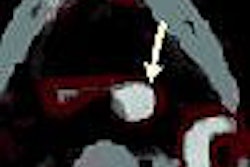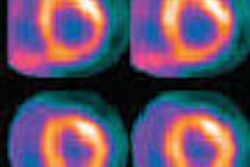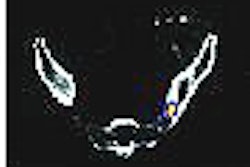WASHINGTON - It will be virtually impossible to discuss nuclear medicine and exclude molecular imaging from the discussion at this week's 54th annual meeting of the SNM, formerly the Society of Nuclear Medicine.
The association believes so devotedly in the future applications and capabilities of molecular imaging that over the past year SNM has "rebranded" itself and revamped its core mission to foster the advance of molecular imaging and therapy, while continuing its simultaneous support of nuclear medicine.
"With molecular imaging, we will experience a revolution in patient care, as we find improved and better ways to diagnose, treat, and manage cancer, heart dysfunction, brain disorders, and many other diseases," SNM President Dr. Martin Sandler said during his Sunday morning welcoming remarks. "Given the evolution of the field, focusing exclusively on nuclear medicine without incorporating other imaging modalities would limit our effectiveness and understanding of how diseases will be diagnosed and treated in the future."
Over the next three to five years, SNM plans to become -- in Sandler's words -- an "indispensable resource for education, knowledge exchange, training, and networking," as well as a "powerful advocate" for nuclear medicine. The association also will take the lead in promoting collaboration with referring physicians and patient groups, and become a "significant supporter of innovations in translational research."
New-look SNM
The SNM also launched a new Web site design to coincide with the start of its annual meeting and highlighted its Molecular Imaging Center of Excellence.
The center's president, Dr. Martin Pomper, noted how the hybrid imaging technology PET/CT has become a clinical standard in nuclear medicine and how the development of PET/MR has progressed to a point in which it soon will become a reality in hospitals.
"We will begin to use all these modalities in a complementary fashion to study physiologic processes and cellular process on the molecular level," Pomper said.
One significant benefit is expected to be the ability to detect functional or physiological changes in a patient before anatomical changes occurs. For example, a physician treating a patient with a tumor with a certain drug should be able to see physiological changes, prompted by the drug, before he or she notices the tumor shrinking.
"Early detection and identification of early changes occurring in tissue can be performed using molecular imaging techniques," Pomper said.
Keynote address
John C. Gore, Ph.D., director of the Vanderbilt University Institute of Imaging Studies in Nashville, TN, sees molecular imaging positively affecting all diseases. "In the field of cancer, imaging has always had a strong role to play in the diagnosis, staging, extent, and location of tumors," he said. "Now we have new tools that will give us additional capabilities, in particular, characterizing tumor phenotype; the ability to assess individual therapeutic targets and monitor individual response."
Whereas past advances in imaging modalities, such as x-ray, ultrasound, MR, PET, and CT, have been driven by technology and developments in engineering and physics, Gore noted that molecular imaging is driven by chemistry and molecular biology. "We have learned a great deal about crucial cell signaling pathways, which are now targets for both imaging and therapy," he said.
Nuclear medicine will monopolize clinical molecular imaging, with the advances in MRI and MR spectroscopy continuing -- as they have for the last 30 years -- for the next 30 years, Gore said. Seven-tesla MRI systems, he added, will benefit molecular imaging, as the greater magnet strength of the modality increases the power and sensitivity of MR techniques.
Vanderbilt installed its 7-tesla MRI system last year and has achieved detailed submillimeter images of the brain within a few minutes time, as well as the acquisition of 300-micron images within seven minutes, Gore noted.
In other SNM news, the year-old "Bench to Bedside" capital campaign to support education, research, and advocacy of molecular imaging has reached $3.9 million in corporate and individual pledges. Sandler took time during the opening ceremonies to acknowledge corporate donations of more than $500,000 from IBA Molecular of Louvain-la-Neuve, Belgium, and Mallinckrodt of Hazelwood, MO, and contributions of more than $250,000 came from Dublin, OH-based Cardinal Health and MDS Nordion of Kanata, Ontario.
By Wayne Forrest
AuntMinnie.com staff writer
June 4, 2007
Related Reading
SNM sets 2007 reimbursement road show dates, December 6, 2006
SNM survey shows NMT satisfaction, November 15, 2006
SNM offers travel tips for nuke med patients, November 9, 2006
SNM initiates $5 million 'Bench to Bedside' campaign, June 5, 2006
Copyright © 2007 AuntMinnie.com



















